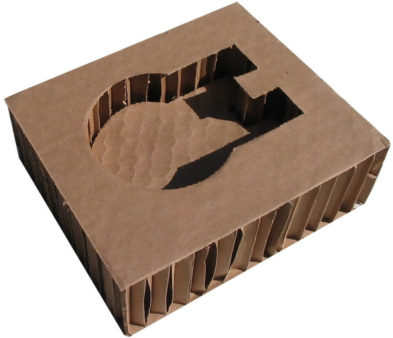Industrial Metal Packaging: Strength and Toughness in Every Layout
Industrial Metal Packaging: Strength and Toughness in Every Layout
Blog Article
Efficient Industrial Recycling Solutions for Sustainable Product Packaging: A Comprehensive Overview
In today's progressively environmentally-conscious world, the demand for sustainable product packaging remedies has never ever been higher. To meet this demand, companies across industries are proactively looking for efficient commercial recycling solutions. However, navigating the complex landscape of lasting product packaging can be testing without a comprehensive overview. That's where this detailed guide on reliable commercial recycling solutions for sustainable packaging is available in. By checking out key locations such as packaging material selection, developing for recyclability, implementing reusing infrastructure, teaming up with reusing companions, and monitoring and measuring reusing success, this guide will outfit you with the knowledge and tools required to make informed decisions and drive positive modification within your organization. Whether you're a product packaging specialist, sustainability supervisor, or just thinking about the topic, this guide will certainly provide important understandings and methods to help you browse the world of lasting product packaging.
Packaging Material Selection
The option of product packaging products plays a vital duty in guaranteeing the sustainability of industrial reusing remedies. The choice of products is vital in lessening environmental influence and maximizing recycling performance when it comes to sustainable packaging. Choosing the ideal products can assist decrease waste generation, preserve resources, and promote a circular economy.
One vital element to consider in packaging material choice is recyclability - industrial metal packaging. Materials that can be easily reused and included back right into the manufacturing cycle are favored. Materials like cardboard, paper, glass, and specific kinds of plastics can be recycled several times without losing their high quality. On the other hand, products that are difficult to recycle, such as mixed plastics or non-recyclable composites, can create challenges for the recycling procedure and may wind up in landfills or burners.
One more factor to consider is the use of sustainable and eco-friendly products. Product packaging made from renewable energies, such as plant-based plastics or biopolymers, can help in reducing dependence on nonrenewable fuel sources and mitigate environment modification. Furthermore, naturally degradable materials damage down normally gradually, reducing the accumulation of waste in garbage dumps.
Additionally, the weight and quantity of packaging materials must be decreased to lower transport prices and power usage. Light-weight products not just need less sources during manufacturing but also add to decrease carbon exhausts throughout transportation.
Creating for Recyclability
In order to make certain the recyclability of product packaging materials, thoughtful style is important. Designing for recyclability involves creating product packaging that can be quickly arranged, separated, and processed in reusing facilities. One essential element of designing for recyclability is the choice of products. Packaging developers must prioritize using materials that are extensively approved for reusing and have developed recycling frameworks. Materials such as glass, aluminum, and particular kinds of plastic, like pet dog and HDPE, are generally reused and ought to be favored over materials that are hard or expensive to recycle.
Another vital consideration in creating for recyclability is the removal of unnecessary components or products. By lessening the number of layers, finishings, and extra elements, packaging can be made easier and less complicated to recycle. In addition, designers ought to intend to lower using blended materials, as they can complicate the reusing process.

Implementing Recycling Facilities
Effective implementation of reusing infrastructure is essential for the success of industrial reusing options. Without correct infrastructure in place, the recycling process becomes ineffective and inefficient, hindering the general objective of sustainable product packaging.
To implement reusing infrastructure successfully, numerous crucial aspects need to be considered. First of all, there ought to be an efficient collection system that assists in the separation and collection of recyclable products. This can include marked recycling containers in public rooms, as well as partnerships with waste monitoring business for curbside pick-up and sorting.
As soon as collected, the recyclable materials need to be transported to recycling facilities in a prompt way. This calls for effective logistics and transport networks, ensuring that the products get to the suitable facilities without hold-up.
At the reusing facilities, progressed sorting and handling modern technologies must remain in location to separate various types of products successfully. This consists of making use this page of automated arranging equipments, optical scanners, and hands-on sorting techniques.
Furthermore, there ought to be a durable market need for recycled materials. This can be attained through partnerships with manufacturers and markets that make use of recycled products in their manufacturing procedures. Creating a secure market for recycled materials incentivizes the reusing industry and advertises the circular economic situation.
Working Together With Recycling Partners

One secret facet of collaborating with recycling companions is the establishment of clear interaction networks. It is very important to develop open lines of communication to facilitate the exchange of details, updates, and responses. This allows both events to stay educated about the progress of reusing campaigns and deal with any kind of obstacles or concerns that may arise.
In addition, collaboration can involve collaborations in making and implementing reusing programs. Recycling companions can offer valuable understandings and guidance in establishing efficient collection systems and establishing the most ideal recycling innovations. By functioning together, services and reusing companions can maximize the recycling process and lessen waste.
Furthermore, cooperation can extend past the functional aspects of recycling. It can also include campaigning for and education and learning campaigns. By signing up with pressures, companies and recycling partners can increase recognition about the value of reusing and promote the adoption of sustainable product packaging practices amongst customers and other stakeholders.
Tracking and Measuring Recycling Success
To make sure the performance of industrial reusing solutions and the achievement of sustainable product packaging objectives, it is critical for businesses and their recycling partners to establish an extensive system for monitoring and gauging reusing success (plastic container manufacturer). Determining and tracking reusing success permits businesses to assess the influence of their recycling initiatives, recognize areas for renovation, and established purposeful targets for future progression
One means to track reusing success is via the usage of data collection and analysis tools. By collecting information on the quantity of product packaging waste created, the percentage of waste that is recycled, and visit their website the sorts of products being reused, services can obtain valuable understandings right into their recycling performance. This data can after Get More Info that be analyzed to identify fads, patterns, and locations of ineffectiveness.
One more essential element of tracking and gauging reusing success is establishing standard and clear metrics. This permits services to compare their performance against market benchmarks and track their development gradually. Metrics such as recycling prices, waste diversion prices, and greenhouse gas discharges can offer a quantitative action of an organization's reusing success.

Conclusion
In verdict, carrying out effective industrial recycling remedies for lasting packaging calls for cautious consideration of product packaging product choice, creating for recyclability, executing reusing framework, working together with reusing partners, and monitoring and measuring reusing success. By integrating these techniques, organizations can add to a more lasting and environmentally-friendly method to packaging, lowering waste and promoting the round economy.
By discovering vital locations such as packaging product choice, developing for recyclability, implementing recycling infrastructure, working together with reusing partners, and tracking and determining recycling success, this guide will equip you with the expertise and devices essential to make enlightened choices and drive favorable change within your company. Packaging designers need to focus on the usage of materials that are commonly accepted for reusing and have established recycling frameworks.Partnership with reusing companions is necessary for the successful execution of commercial recycling services and the success of sustainable packaging goals. By joining pressures, businesses and reusing companions can elevate awareness regarding the significance of recycling and advertise the adoption of lasting packaging methods amongst customers and various other stakeholders.
By collecting information on the amount of packaging waste produced, the portion of waste that is recycled, and the types of products being recycled, businesses can obtain useful insights into their reusing efficiency.
Report this page